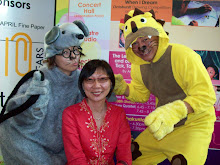*What is Legal Deposit?
"Legal Deposit is one of the statutory functions of the National Library whereby all works published in Singapore can be collected and preserved to become a part of Singapore's heritage.
The National Library is supported in this role through the provisions of the National Library Board Act (Chapter 197, No. 5 of 1995, Part II Section 10) whereby two copies of every publication published in Singapore, have to be deposited with the National Library within four weeks from the date of publication."
*Sitemap with the following links is extracted from the Legal deposit website http://deposit.nl.sg/LDNet-web/faces/sitemap.jsp
Services for Publishers (Publishers' Login)
About Legal Deposit
About Digital Deposit
About ISBN, ISSN, and ISMN
About CIP
About Donation
Guides/Brochures for users
Highlights
- Legal Deposit Flash
- Heritage Road Show
- Donors Gallery
FAQs
Contact Info
Feedback
Terms of Use
Privacy Policy
* Beside fulfilling the legal deposit requirement, it is possible for the author to give more copies to NLB and the details for such donation and guidelines are as follows:
* Physical Donation: Donor may fill in the form via http://deposit.nl.sg/LDNet-web/faces/gifts/TAndC.jsp
Please note the statement from the webpage:
"Unless otherwise arranged between the donor and NLB, we request that the donor would deliver/post the accepted items to:
Gifts & Exchange
National Library Board
Library Supply Centre
No. 3, Changi South Street 2
Xilin Districentre Building B, Level 2
Singapore 486548
* For more information or clarification, please contact the Library Officer, Gifts and Exchange Section at 6546-7275 or email to gifts_exchanges@nlb.gov.sg
Gifts & Exchange
National Library Board
Library Supply Centre
No. 3, Changi South Street 2
Xilin Districentre Building B, Level 2
Singapore 486548
* For more information or clarification, please contact the Library Officer, Gifts and Exchange Section at 6546-7275 or email to gifts_exchanges@nlb.gov.sg
Contact Info: For enquiries on donations of library material:
Tel: 6546-7275
Fax: 6546-7262
E-mail: gifts_exchanges@nlb.gov.sg
Tel: 6546-7275
Fax: 6546-7262
E-mail: gifts_exchanges@nlb.gov.sg
Hope the above information is helpful!
Dexterine Ho

